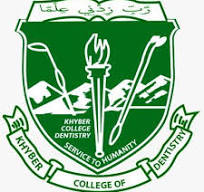PARAFUNCTIONAL HABITS AMONG UNDERGRADUATE CLINICAL STUDENTS AND HOUSE OFFICERS AT KHYBER COLLEGE OF DENTISTRY
DOI:
https://doi.org/10.33279/jkcd.v6i02.219Abstract
Objective: The objective of this study was to find out the prevalence of parafunctional habits in undergraduate clinical students and House officers.
Material and Methods: The present study was conducted at Khyber College of Dentistry, Peshawar, Pakistan. A total of 200 undergraduate clinical students and house officers between the ages of 20-25 years were included. The structured questionnaire was a comprehensive instrument including items determining the presence of parafuntional habits. The questionnaire included level of study, age, gender, socioeconomic status and various parafuntional habits like bruxism, clenching, nail biting, lip/object biting or thumb sucking. It also included additional questions like duration of habits if any, consultations taken for these habits and qualifications of the consultants. The data obtained was analyzed via SPSS-19 version.
Results: Out of total subjects, 165 responded to the questionnaire. Female (72%) predominated male (28%). Majority of the respondents were from a higher level of studies. Socioeconomic indicators showed a good status in majority (148,88.5%) of the participants. One hundred and seven (64.84%) were having a history of parafunctional habits in isolation or combination. Most of the respondents (30.84%) were having lip/object biting, followed by nail biting (16.82%).
Conclusions: Females in high educational levels, suffer from parafunctional habits especially objects / nail biting. Introducing educational programs in curricula may raise awareness of these oral parafunctions’ harmful effects.
Downloads
Published
How to Cite
Issue
Section
License
Copyright (c) 2016 Brekhna Murad, Nida Gul Sepah, Basheer-Rehman, Tariq Ahmad

This work is licensed under a Creative Commons Attribution-NonCommercial-NoDerivatives 4.0 International License.
You are free to:
- Share — copy and redistribute the material in any medium or format
- Adapt — remix, transform, and build upon the material
- The licensor cannot revoke these freedoms as long as you follow the license terms.
Under the following terms:
- Attribution — You must give appropriate credit , provide a link to the license, and indicate if changes were made . You may do so in any reasonable manner, but not in any way that suggests the licensor endorses you or your use.
- NonCommercial — You may not use the material for commercial purposes .
- No additional restrictions — You may not apply legal terms or technological measures that legally restrict others from doing anything the license permits.









